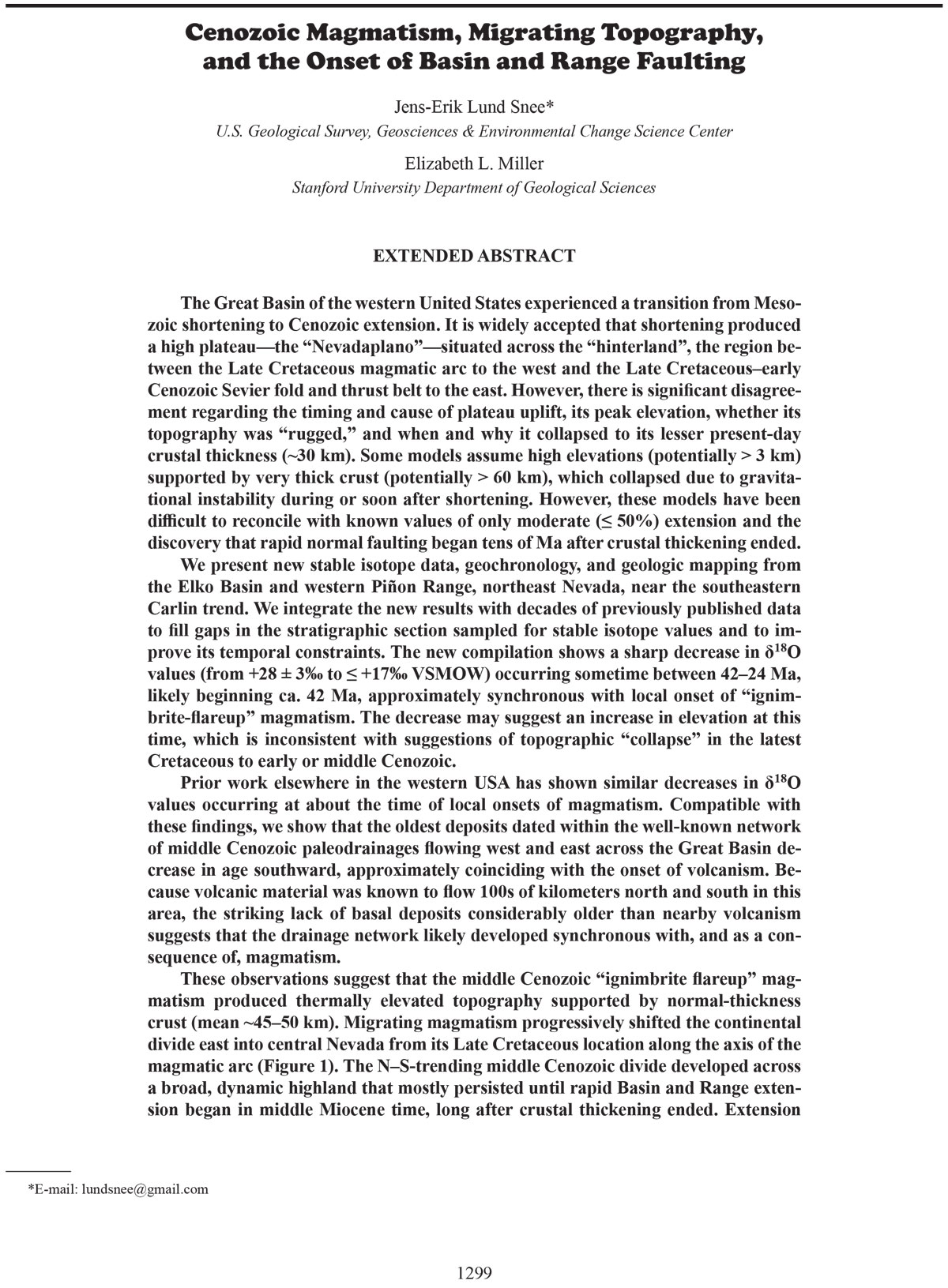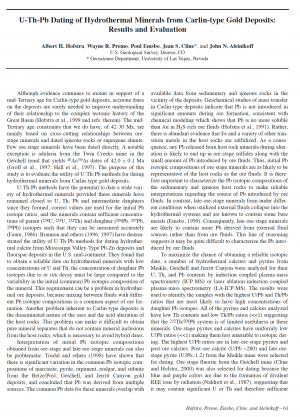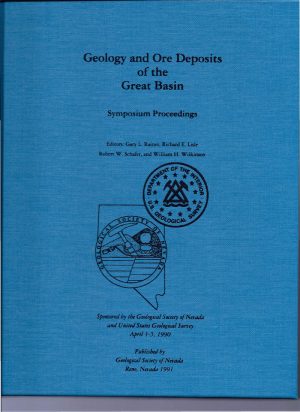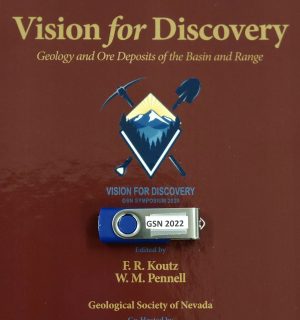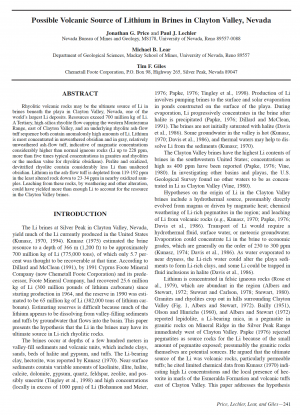Description
The Great Basin of the western United States experienced a transition from Mesozoic shortening to Cenozoic extension. It is widely accepted that shortening produced
a high plateau—the “Nevadaplano”—situated across the “hinterland”, the region between the Late Cretaceous magmatic arc to the west and the Late Cretaceous–early
Cenozoic Sevier fold and thrust belt to the east. However, there is significant disagreement regarding the timing and cause of plateau uplift, its peak elevation, whether its
topography was “rugged,” and when and why it collapsed to its lesser present-day
crustal thickness (~30 km). Some models assume high elevations (potentially > 3 km)
supported by very thick crust (potentially > 60 km), which collapsed due to gravitational instability during or soon after shortening. However, these models have been
difficult to reconcile with known values of only moderate (≤ 50%) extension and the
discovery that rapid normal faulting began tens of Ma after crustal thickening ended.
We present new stable isotope data, geochronology, and geologic mapping from
the Elko Basin and western Piñon Range, northeast Nevada, near the southeastern
Carlin trend. We integrate the new results with decades of previously published data
to fill gaps in the stratigraphic section sampled for stable isotope values and to improve its temporal constraints. The new compilation shows a sharp decrease in δ18O
values (from +28 ± 3‰ to ≤ +17‰ VSMOW) occurring sometime between 42–24 Ma,
likely beginning ca. 42 Ma, approximately synchronous with local onset of “ignimbrite-flareup” magmatism. The decrease may suggest an increase in elevation at this
time, which is inconsistent with suggestions of topographic “collapse” in the latest
Cretaceous to early or middle Cenozoic.
Prior work elsewhere in the western USA has shown similar decreases in δ18O
values occurring at about the time of local onsets of magmatism. Compatible with
these findings, we show that the oldest deposits dated within the well-known network
of middle Cenozoic paleodrainages flowing west and east across the Great Basin decrease in age southward, approximately coinciding with the onset of volcanism. Because volcanic material was known to flow 100s of kilometers north and south in this
area, the striking lack of basal deposits considerably older than nearby volcanism
suggests that the drainage network likely developed synchronous with, and as a consequence of, magmatism.
These observations suggest that the middle Cenozoic “ignimbrite flareup” magmatism produced thermally elevated topography supported by normal-thickness
crust (mean ~45–50 km). Migrating magmatism progressively shifted the continental
divide east into central Nevada from its Late Cretaceous location along the axis of the
magmatic arc (Figure 1). The N–S-trending middle Cenozoic divide developed across
a broad, dynamic highland that mostly persisted until rapid Basin and Range extension began in middle Miocene time, long after crustal thickening ended. Extension initiated following removal of the flat-subducting Farallon slab and during transtensional basin formation along the developing San Andreas plate boundary. Once these
boundary conditions enabled extension, faulting was driven by spreading of crust
that was thermally uplifted and weakened due to long-lived, mantle-derived middle
Cenozoic magmatic input into lithosphere.

